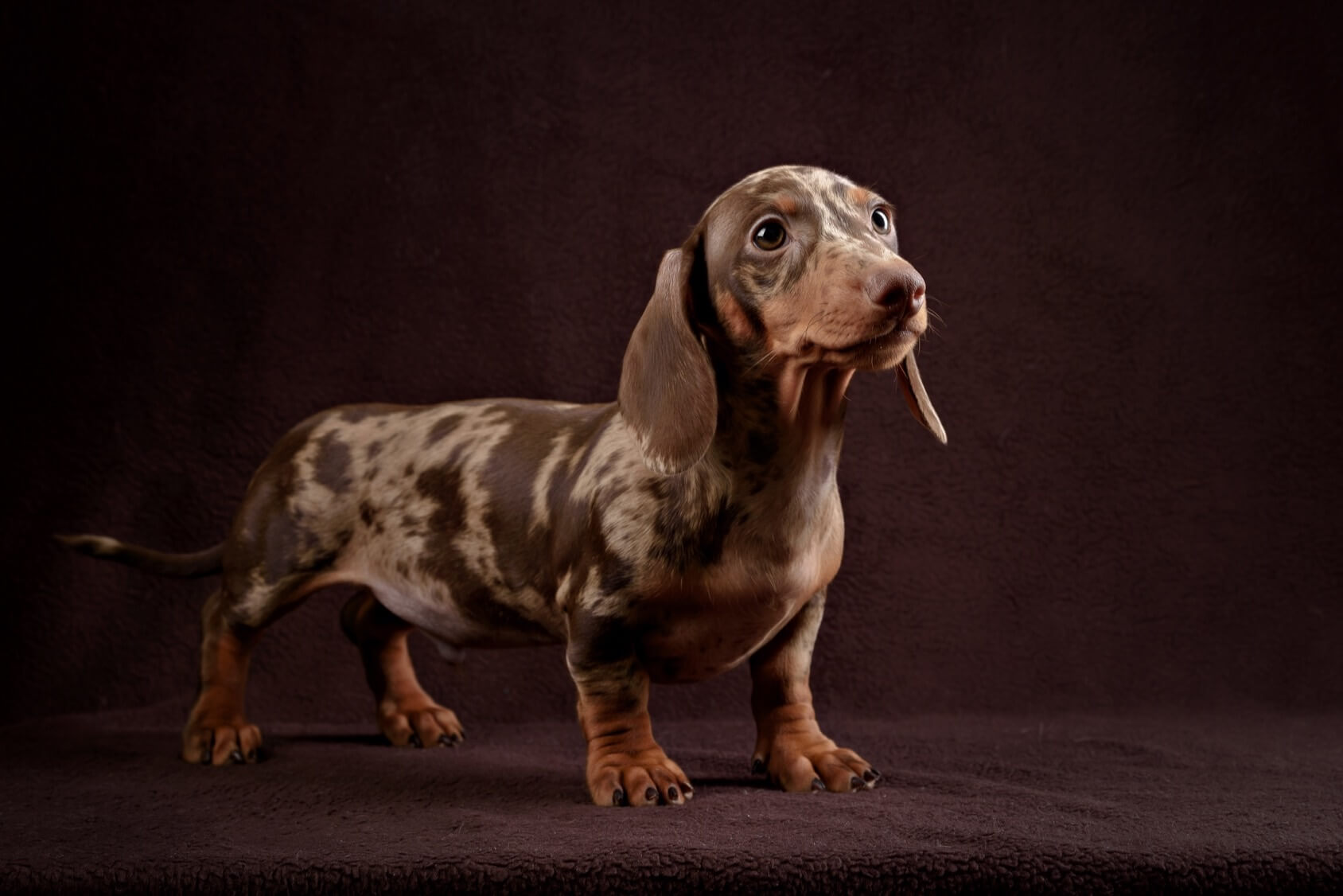
From Adobe Stock
One sunny afternoon, while walking through the park, I encountered a Dapple Dachshund that immediately caught my eye. Its unique coat, a beautiful pattern of spots and splashes over a base color, was unlike anything I had seen. A seasoned breeder at a local dog show saw my amusement.
“You see, the dapple pattern isn’t just for looks,” she began. “It’s a genetic trait, a beautiful accident of nature that gives each dapple its unique splashes of color.” Intrigued, I asked, “So, it’s all in the genes?” She nodded, explaining further, “Exactly, a specific gene causes this variation. It’s what makes them stand out in the crowd of Dachshunds.”
She explained how the dapple pattern is a result of a specific gene causing variations in coat colors, ranging from silver to dark gray, and even mixed shades in between, all splattered across their fur like paint on a canvas.
This brief exchange opened my eyes to the fascinating world of canine genetics, and it sparked a deep curiosity within me about not just this purebred Dachshund, but the intricate genetic makeup that defines various dog breeds. Today, through this article, I aim to share with you the wonders of the Dapple Dachshund’s unique coat, delve into their personality traits, and provide insights on how best to care for these distinctive dogs.
TABLE OF CONTENTS
Dapple Dachshund Quick Breed Summary
| Common Names | Dapple Dachshund, Merle Dachshund |
| Size: | 8-9 inches |
| Weight: | 11-32lb |
| Lifespan: | 12-16 years |
| Coat: | Smooth, wire haired, or long haired |
| Color: | Black and tan, red and tan, or chocolate and tan |
| Do They Shed: | Moderately |
| Temperament: | Feisty, confident, protective, loyal, and affectionate |
| Intelligence: | Very intelligent |
| Socialization: | Need to be socialized early on so they do not become aggressive or territorial |
| Destructive Behavior: | Will dig or chew if bored or left alone for too long |
| People Skills: | Affectionate and loving with family but wary of strangers |
| Good with Children: | Better with older kids (10+) |
| Activity Levels: | Highly active |
History and Origin of the Dapple Dachshund
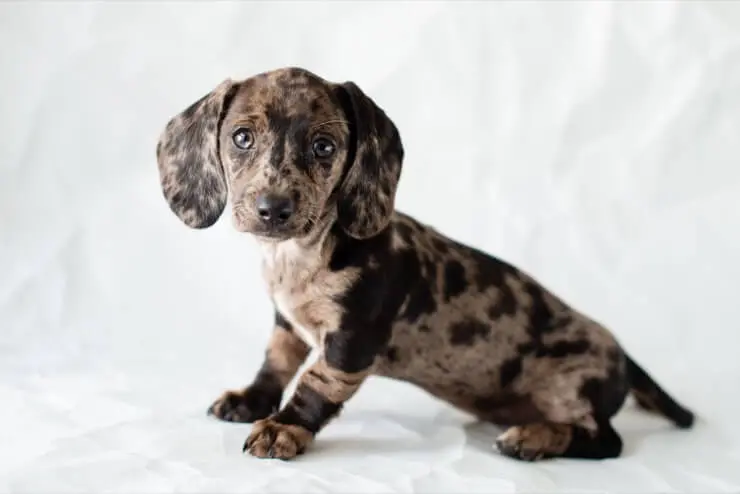
From Adobe Stock
The Dachshund breed has a history that goes way back, and it’s pretty interesting when you get into it. Originally from Germany, these dogs were bred for a very specific purpose: hunting. But they weren’t after just any game; Dachshunds specialized in hunting badgers. “Dachshund” actually means “badger dog” in German, which I found quite straightforward and, honestly, a bit charming.
The thing that really got me about their history is how their unique body shape was by design, not chance. Their long bodies and short legs were perfect for digging into badger dens, and their brave little hearts didn’t hurt either. Learning this made me appreciate their shape in a whole new way.
Fast forward to the present, and while you don’t see many Dachshunds hunting badgers anymore, those traits are still a big part of who they are. They’re courageous, curious, and have a knack for digging that can be quite a surprise if you’re not prepared for it.
Physical Characteristics of the Merle Dachshund
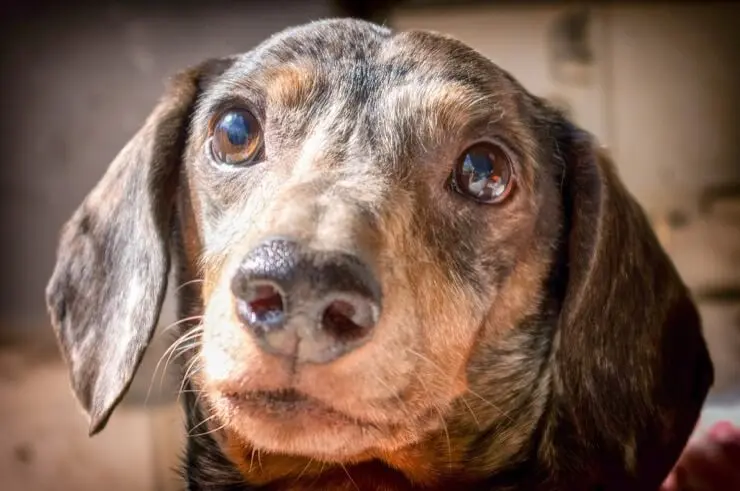
From Adobe Stock
From their unique patterns to their distinctive body structure, there’s so much more to these dogs than meets the eye. In this section, we’ll explore the physical characteristics of Dachshunds in more detail.
Coat and Color
When I first started learning about Dachshunds, the variety in their coats and colors really caught my attention. The Dapple Dachshund, in particular, has this unique coat pattern that’s like nothing else. Their coat can be smooth, long, or wire-haired, which adds so much to their personality. But it’s the dapple pattern that stands out — those patches of darker color over a lighter base make each one look like a little masterpiece.
I am amazed at how these patterns make each dog so distinct. It’s like they’re wearing their own natural, one-of-a-kind coat. The colors can range too, from black, chocolate, blue, and gray, and sometimes they have these striking blue eyes that just draw you in.
Height and Weight
Talking about the height and weight of Dachshunds, these little guys are quite the package. They come in two sizes: standard and miniature. The standard ones are bigger, but when I say “bigger,” I mean it in the most relative sense. They’re still pretty small compared to other breeds. A standard Dachshund’s weight can be about 16 to 32 pounds, while the miniatures tip the scales at under 11 pounds. Their height at the shoulder? Not much — about 8 to 9 inches for the standard and 5 to 6 inches for the mini. What’s funny is, despite their small size, they don’t seem to know it. They have this big dog attitude in a small dog body, which is both endearing and, at times, a challenge.
Shape
The shape of Dachshunds is something that never fails to intrigue me. They’re famously known for their long bodies and short legs, a design that was all about function back in the day for hunting badgers. This unique shape gives them a distinctive silhouette that’s hard to confuse with any other breed. When you look at them from the side, it’s like seeing a little low-rider car zooming around — all ground-hugging and streamlined. Their deep chest provides ample room for a big heart and lungs, giving them a surprising amount of stamina and a loud bark for their size. Their elongated spine, though, does mean they need to be handled carefully to avoid injuries. Every time I pick one up or see someone else do it, I’m reminded of how important it is to support their back.
Dapple Dachshund Personality and Temperament
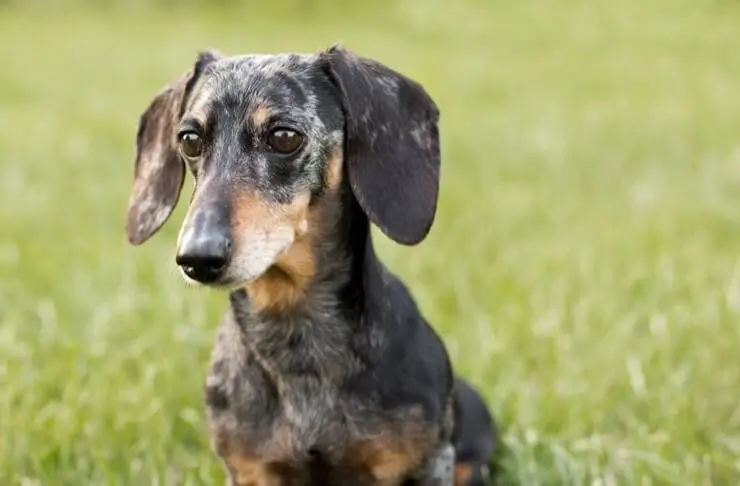
From Adobe Stock
Exploring the personality and temperament of Dapple Dachshunds has given me a profound appreciation for what these small dogs bring to the table. Despite their compact size, they carry the spirit of a lion. It’s this bold and courageous heart that often surprises people who might underestimate them at first glance.
From my experience, Dapple Dachshunds possess an unwavering loyalty that’s truly commendable. They’re not just pets; they become integral members of the family, forming bonds that are as strong as steel. Their protective instincts are remarkable. Despite their size, they don’t hesitate to stand guard, using their surprisingly loud barks to alert their families of anything unusual. It’s a trait that, while admirable, also reminds me of the importance of early training, especially when it comes to managing their barking.
Their energy and playfulness are something that never fails to amaze me. These dogs have an incredible zest for life, whether it’s a simple walk in the park or playtime in the backyard. They approach life with a joy and enthusiasm that’s infectious. Their antics and goofy personality are guaranteed to bring laughter and lightness into any home.
However, Dapple Dachshunds can be quite the characters, with a stubborn streak that poses a unique challenge in training. They’re not afraid to show their moods, making it clear when they’re not pleased. This stubbornness, while it can be trying, also adds to their charm. It’s a reminder of their independence and strong-willed nature.
When it comes to strangers and other animals, their initial reaction can be aloof or reserved. This breed’s wariness around unfamiliar faces and pets emphasizes the need for socialization from a young age. It’s crucial to help them become well-adjusted, sociable dogs.
The loud bark from such a small dog is always a topic of surprise. Managing their vocal expressions requires patience and consistent training. Starting this training early is key to ensuring that their barking is under control, making them well-behaved members of any household.
Common Health Concerns for Merle Dachshund
I find that they have the same health concerns as other Dachshunds but with some unique considerations due to their specific coat pattern.
Intervertebral Disc Disease (IVDD)
One of the most common health concerns I’ve seen in Dachshunds, including Dapple Dachshunds, is Intervertebral Disc Disease (IVDD). This condition is due to their long spine and short rib cage, putting them at a higher risk for spinal issues. Symptoms can range from mild discomfort to severe pain, and in some cases, it can lead to paralysis. The cause is often related to genetics, obesity, or physical activity that’s too strenuous for their unique body shape.
Progressive Retinal Atrophy (PRA)
Progressive Retinal Atrophy (PRA) is another condition that can affect Dapple Dachshunds. This genetic disorder leads to the gradual deterioration of the retina, eventually causing blindness. I’ve seen how heart-wrenching it can be for owners as they watch their beloved pets adapt to vision loss. Symptoms typically start with night blindness moving to full blindness.
Understanding the genetic background of your Dapple Dachshund can help in anticipating PRA, though currently, there’s no cure. Early diagnosis and adapting to the home environment can make a significant difference in the quality of life for dogs with PRA.
Deafness
Deafness is a health concern more specific to Dapple Dachshunds, particularly those with large white or very light areas in their coat, which can be linked to the genes responsible for their dapple pattern. It’s not something every dapple will face, but it’s more common in this variety than in solid-colored Dachshunds. Deafness can be present from birth or develop as they age.
Noticing a Dapple Dachshund not responding to sound cues can be the first sign of hearing issues.
Caring for a Dapple Dachshund
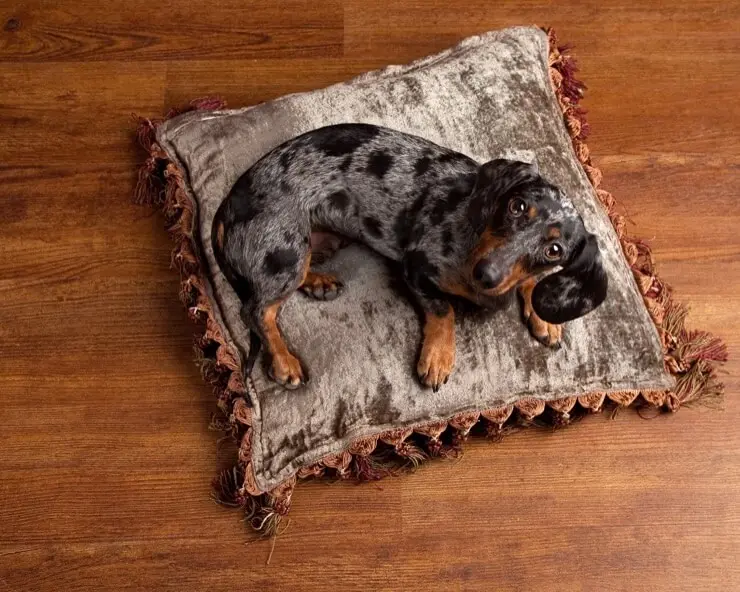
From Adobe Stock
Caring for a Dapple Dachshund, or any dog for that matter, is a big responsibility that I’ve always taken to heart. From my experience, understanding their specific needs can make all the difference in ensuring they lead a happy, healthy life. Let’s dive into what you should know about keeping these unique dogs in top shape.
Exercise
Despite their small size, Dapple Dachshunds are bundles of energy that need regular exercise to stay healthy and happy. I’ve found that a good mix of physical and mental stimulation works best for them. Daily walks are a must, but it’s important to keep them on a leash to avoid any chasing incidents, given their strong hunting instincts. Additionally, their short legs and long backs mean you have to be careful not to overdo it – no jumping or strenuous activities that could harm their spine.
From personal experience, interactive play sessions in a safely enclosed area can be a great way for them to burn off energy while minimizing the risk of injury. Puzzle toys have also been a hit with the Dapple Dachshunds I’ve cared for, keeping their minds engaged and bodies active. Regular, moderate exercise not only helps in maintaining their weight but also in preventing boredom and related behavioral issues.
Training Dapple Dachshunds
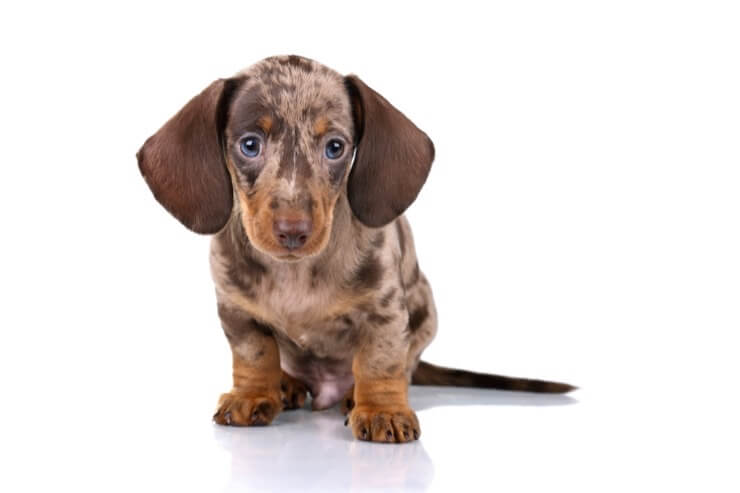
From Adobe Stock
Training a Dapple Dachshund has its unique challenges, mainly due to their independent and sometimes stubborn nature. However, I’ve learned that patience, consistency, and positive reinforcement are key. They respond well to treats and praise, making training sessions both fun and rewarding for them. Starting training early is crucial, especially for basic commands and housebreaking.
One of the biggest lessons I’ve learned is that training is not just about teaching your dog; it’s about building a strong, trusting relationship between you and your pet. Understanding their personality and tailoring your training approach to suit their individual needs can make a significant difference in how well they respond. With the right approach, training your Dapple Dachshund can be a rewarding experience for both of you, leading to a harmonious and happy life together.
Socialization is vital for these pups because they are not naturally welcoming to strangers and other animals. Their protective instincts cause them to be wary of newcomers. You need to introduce them to a variety of people and animals at a young age so that they realize that new people are not a threat to their beloved family.
Grooming
Over the years, I’ve picked up quite a few tips and tricks for grooming these unique little dogs. Whether you’re dealing with a smooth, long, or wire-haired variety, each type has its own grooming needs. Here’s what I’ve learned.
Coat Care
For smooth-coated Dapple Dachshunds, grooming is relatively straightforward. A weekly brush with a soft bristle brush keeps their coat shiny and helps reduce shedding. I’ve always found this to be a great bonding time, too. Long-haired and wire-haired varieties require a bit more work. Long-haired ones benefit from brushing a few times a week to prevent tangles and mats, while wire-haired Dachshunds need regular brushing and occasional stripping to maintain their coat’s texture.
Nail Care
Nail trimming is something I’ve learned not to overlook. Dachshunds need their nails trimmed regularly to prevent discomfort and potential problems with walking. I’ll admit, the first few times can be nerve-wracking, for both you and your dog. But with patience and practice, it becomes just another part of your grooming routine. Using a sharp, properly sized nail clipper and keeping treats on hand for after has always worked best for me.
Ear Care
Ear care is particularly important, especially for the long-haired variety, as their ears can easily trap dirt and moisture. I recommend you check their ears weekly for any signs of infection or wax buildup. Cleaning them with a gentle, dog-specific ear cleaner and a soft cloth can help prevent issues.
Dental Care
Dental care is another critical aspect of grooming that I recommend you incorporate into your routine. Brushing their teeth several times a week with dog-specific toothpaste helps prevent dental disease and keep their breath fresh. Starting dental care early has made it much easier for me to maintain their oral health, making those close cuddles even more enjoyable.
Feeding
Feeding a Dapple Dachshund is an aspect of care that I often discuss with pet owners. It’s vital to tailor their diet to meet the specific needs of this unique breed, considering their energy levels, size, and potential health concerns.
Understanding Their Dietary Needs
Dapple Dachshunds require a balanced diet rich in protein to support their muscle mass, with an appropriate amount of carbohydrates for energy, and fats for healthy skin and coat. Given their propensity for back problems, it’s crucial to maintain their ideal weight to avoid additional stress on their spine. I recommend focusing on foods that are formulated for small breeds with high energy levels but also keeping an eye on calorie content to prevent obesity.
Choosing the Right Food
Selecting the right food involves considering the dog’s age, activity level, and any health issues. High-quality dry kibble is often a good choice for its convenience and dental benefits. However, for Dapple Dachshunds with specific dietary needs or preferences, wet food or a balanced raw diet might be appropriate. It’s something I suggest discussing with a veterinarian, as they can provide personalized advice based on the dog’s health and nutritional requirements.
Portion Control and Feeding Schedule
Portion control is paramount. These dogs can gain weight easily if their food intake isn’t carefully managed. I usually recommend feeding adult Dapple Dachshunds twice a day, using the feeding guide on the food’s packaging as a starting point but adjusting as needed based on the dog’s weight and activity level. For treats, I suggest opting for healthy options and considering them part of the daily calorie intake.
Special Dietary Considerations
Every Dapple Dachshund is an individual, and some may have specific dietary needs due to health conditions like diabetes or allergies. Puppies, for instance, need more calories and nutrients to support their growth compared to adults. Senior dogs may benefit from a diet lower in calories but higher in fiber. It’s important to be observant and ready to adjust their diet as needed, something I often emphasize to owners.
FAQs on Merle Dachshund
How much does a Dapple Dachshund cost?
Prices for these precious dogs can range anywhere from $400 to $1500. These pretty pups are often much more expensive than the typical Dachshund because breeders consider these dogs to be rare.
How big do dapple Dachshunds get?
Dapple Dachshunds, like all Dachshunds, come in two main sizes: standard and miniature. Standard Dapple Dachshunds typically weigh between 16 to 32 pounds, while miniatures weigh under 11 pounds. Their height at the shoulder can vary from 5 to 9 inches, depending on whether they’re a standard or miniature size.
Are dapple Dachshunds good with children?
Dapple Dachshunds can be good with children, especially if they’re raised together. However, due to their small size and long back, it’s important to supervise interactions to prevent accidental injury to the dog. Teaching children how to properly handle and respect the dog is crucial.
Do dapple Dachshunds require a lot of grooming?
The grooming requirements for a dapple Dachshund depend on their coat type. Smooth-coated dapples need minimal grooming, while long-haired and wire-haired varieties require more regular brushing to prevent matting. Regardless of coat type, all Dapple Dachshunds will benefit from regular nail trims, ear cleaning, and dental care.
Are there any specific health issues associated with dapple Dachshunds?
Dapple Dachshunds share the same general health concerns as other Dachshunds, such as intervertebral disc disease (IVDD), due to their long backs. The dapple gene can also be associated with an increased risk of hearing and vision problems, including deafness and eye issues, particularly in dapples with large white areas on their coat.
How long do dapple Dachshunds live?
Dapple Dachshunds have a lifespan similar to other Dachshunds, generally living between 12 to 16 years. Proper care, a healthy diet, regular exercise, and routine veterinary check-ups can help ensure they live a full and happy life.
Can dapple Dachshunds live in apartments?
Yes, dapple Dachshunds can adapt well to apartment living due to their small size. However, they are active and energetic dogs that require daily exercise to stay healthy and prevent boredom. Regular walks and playtime are essential, even in a smaller living space.
Is it difficult to train a dapple Dachshund?
Dapple Dachshunds can be stubborn, which might make training a challenge. However, they are also intelligent and respond well to positive reinforcement techniques. Consistency, patience, and early socialization and training are key to successfully training a Dapple Dachshund.
Stubborn Yet Affectionate Companions
For those new to dog ownership, these little guys can seem like a handful with their stubborn streaks and occasional moodiness. But let me tell you, with a bit of patience and the right approach to training, they turn into the most loyal and loving companions you could ask for.
Dapple Dachshunds do need their minds kept busy and enjoy a good amount of exercise, but they’re surprisingly low maintenance in other aspects. If you’re ready to invest the time and effort, what you get in return is an affectionate friend who’ll bring endless smiles and laughter into your life.





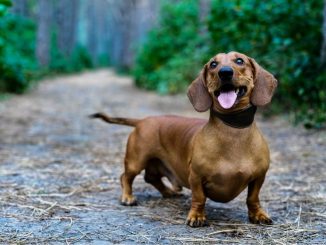
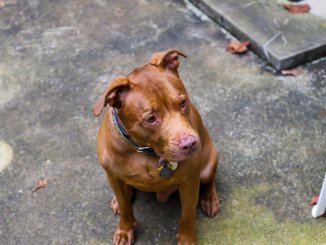


Id love 1 please call me 3616607531 Henry Bernal